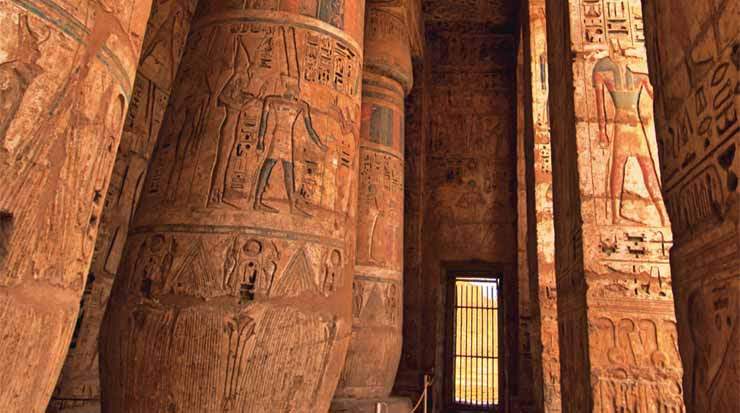As one of the country’s main sources of income, tourism is fundamental to the Egyptian economy.
In 2015, the travel industry contributed some USD14.5 billion to GDP and supported 1,110,600 jobs.
According to World Travel & Tourism Council direct contributions are expected to rise 0.7 percent this year and forecasted to increase 4.6 percent per annum until 2026, where it is expected to account for 5.3 percent of the total GDP.
With this in mind, the introduction of scheduled flights from Europe, traditionally a key source market for the North African country, will no doubt play a big role in boosting Egyptian tourism.
While the reduction, cancellation and merging of flights has had a strong impact on arrival numbers, it has not necessarily damped demand.
Mohamed Eid, assistant director, sales and marketing, Gorgonia Beach Resort, explained that potential European guests are eager to visit but are unable to due to a lack of flights.
Having said that, more and more countries are lifting travel bans to Sharm El Sheikh, flights from Poland, Italy and Germany have recently resumed, revealed Mohammad Labban, general manager, Hyatt Regency Sharm El Sheikh.
Furthermore, Egyptian Tourism Board is making great efforts to showcase renewed safety measures, while talks continue with Russian officials to recommence flights to the resort town.
EVOLVING MARKETS
Prior to unfortunate events, Russian inbound tourism accounted for 35 percent of the total tourism flow, noted Lamia Assem, regional director, marketing communications, TOLIP Hotels & Resorts Egypt, while British nationals represented 11 percent.
Given the decreased accessibility from these destinations, there has been a notable shift in the country’s source markets.
As Ramy Darwish, regional director, sales and marketing, SUNRISE Resorts & Cruises, explained, guests from the 6area are frequenting Sharm El Sheikh, an inbound trend described by many.
Illustrating the benefits of the growing Middle Eastern market, Moustafa Abaza, director, sales and marketing, Mövenpick Hotel & Casino Cairo – Media City, said, “[...] They usually come as individuals rather than groups which results in longer stay durations [and] they use all the hotel’s services.”
At El Gouna, the tourist resort town with 18 properties, Jens Freise, vice president, marketing and sales, Orascom Development Holding, described the German speaking market as the majority of its guests, followed by Belgium, the Netherlands and Luxembourg.
Meanwhile, Tarek Mousa, CEO, Egypt & Beyond Travel, noticed a clear shift in where inbound tourists arrive from, highlighting Indonesia, Malaysia and India as new source markets, complementing the company’s North American clients.
Continuing the topic of unfamiliar nationalities, Eid disclosed an increased occurrence in Polish and Ukrainian visitors in Marsa Alam, which he attributes to low hotel rates.
Nevertheless, domestic tourism also plays a role in the industry, as Thomas William, managing director, Environmental Quality International (EQI), underscored that a notable proportion of both Egyptian and foreign residents based in the country frequented to the management company’s three eco-lodges this year.
Even with novel source markets, occupancy at properties is still considered to be at a low.
Eid revealed that Gorgonia Beach Resort achieved an average occupancy of 87 percent in 2015, yet the property is finding it hard to match that figure this year.
Revenue is also incomparable due to aggressive summer offers and repeated increment in suppliers and material expenses.
“Therefore, to survive with the lower cost while maintaining the same quality and service – which we consider it one of the main tools to keep our position in the market – is very difficult,” elaborated Eid.
Despite an average occupancy of 62 percent in the third quarter (Q3) of this year, a quarter-on-quarter drop of 11 percent, Jens noted, “In Q3, average room rate has marked a 14 percent increase which reflected positively on the overall performance.”
Conversely, with growing demand for eco-tourism, William noted an increase in guests at the company’s three eco-lodges in Siwa, when compared to 2015, suggesting opportunities within a niche segment.









